Class Fantasy Rulebook
Welcome to the Class Fantasy 1.0 Rulebook. You can find a permalink here on my personal website. This document may be updated in the future to reflect patches, rule clarifications and expansions to the game.
First, a bit of housekeeping — several rounds of Class Fantasy games have already shipped out. I promised to send them by this summer and I’m glad to say we are a bit ahead of schedule. Many of you (in the US) have likely already received your copy in the mail. International orders will start shipping out next week. Keep an eye out for the email. While the gameplay is elegantly balanced between all classes and ideologies, I did play favorites during the shipping order — libertarian players may find their packages shipped at the slowest possible speed and exclusively through the United States Postal Service. Consider this a lesson in the restoration of state capacity and a scathing critique of the private sector. Good luck and have fun. o7
The game is available on Metalabel. New purchases will ship out immediately.
Class Fantasy 1.0 Rulebook
Class Fantasy is an action RPG card game that pairs fantasy character classes with political ideologies. Your goal is to defeat other players in battle and achieve utopia. The game accommodates 2 - 12 players. If you’ve played classic games like Magic: The Gathering or Dungeons & Dragons, you will pick it up quickly. A full glossary of terms can be found at the end.
This rulebook will guide you, step by step, through the gameplay. If this is your first time playing, you can read this rulebook aloud to the table and it will guide you through the process. It will assist you with choosing your character, setting your goals and understanding the mechanics. It will not be able to assist you with understanding the Hegelian dialectic, completing the system of German Idealism, or getting a gf. It can however be used as a model for a functioning planned economy.
Game Materials
You will need 1 deck of Class Fantasy cards + d8, d12 and d20 dice. (These are included with the game). Have a pen & paper on hand to keep score!
Character Stats
Each of the 12 classes has unique stats such as Health Points, Quickness and Armor Class. These stats can be found on the front and reverse side of the portrait card for each character.
Health Points represent your starting health and HP cap. Players may not be "overhealed" to gain life above their HP cap.
Quickness indicates the turn order of the game. This is sometimes referred to as “initiative” in other RPGs. Quicker players go first.
Armor Class absorbs physical damage. Some characters are more durable than others.
Character Choice
Layout all character cards on the table. Arrange them in a Political Compass formation.
Players will roll to determine who has the first choice of character. The highest rolled player will begin, then proceed clockwise around the table.
The first player may choose any character in any alignment. Following players must choose a character that does not fall within either alignments of the previous player. Repeat this process until all players have chosen a character.
For example, if Player 1 chooses Lawful Evil, then Player 2 must choose a character that does not fall within either of the Lawful or Evil alignments. If Player 2 chooses Chaotic Good, then Player 3 must choose a character that does not fall within either of the Chaotic or Good alignments. And so on.
This distribution of character alignments ensures a balanced game. Character choice can be a highly strategic process. Remember, you are not only choosing your individual character but also selecting your allies and shared win conditions. It may seem like an advantage to go first and choose from a wider selection of characters — but it may also be an advantage to go last and choose your character with the full knowledge of all the other players in the game.
Character choice also tells us a lot about individual players. If your friend picks a character that clashes with your own worldview, it may be time to expel them from the commune and publicly denounce them as a counter-revolutionary. Choose wisely.
Seating Arrangement
Pick an orientation for the game table. Each side of the table should correspond to either the Good, Evil, Lawful or Chaotic alignments. Players will sit on the designated side that aligns with their character. Corner alignment players will sit at the corresponding table corners.
Turn Order
Players will take turns in order of Quickness. This number is indicated on each character card. For example: Q12, Q11, Q10, etc.
Players may not deal damage during the first turn rotation. Players may begin channeling attacks, use healing or utility abilities, but they may not deal damage. (Think of this like “Summoning Sickness” from Magic: The Gathering.) Certain characters may have Haste abilities that allow them to deal damage on the first turn.
At the end of their turn, players will announce the Quickness order to the table to signal the next player. For example, a player with Quickness 9 may conclude their turn and announce “Quickness moves to 8”.
Again, it may be an advantage to go first and gain the upper hand — but it may also be an advantage to go last and choose your response after knowing the actions of all other players. Many strategies can prevail.
Win Conditions
Each class has certain win conditions. These win conditions can be seen on the reverse side of the portrait card for each character. Win conditions will award points to all players who meet the criteria. Players must battle until a win condition occurs.
Win conditions take effect automatically. For example, if the only surviving players are Anarcho-Capitalism and Anarcho-Communism, the Chaotic win condition will take effect.
The maximum way to achieve points in the game is to be the only surviving player and achieve Utopia.
Utopia — You are the only surviving player.
Gain 2 Victory Points.Lawful — Only Lawful players survive.
Surviving players gain 1 Victory Point.Chaotic — Only Chaotic players survive.
Surviving players gain 1 Victory Point.Good — Only Good players survive.
Surviving players gain 1 Victory Point.Evil — Only Evil players survive.
Surviving players gain 1 Victory Point.Moral — Only Morally Neutral players survive.
Surviving players gain 1 Victory Point.Ethical — Only Ethically Neutral players survive.
Surviving players gain 1 Victory Point.
Turn Phases
Each player turn consists of 3 phases. You begin with all cards in hand.
Phase 1 — Resolve all channeled abilities and calculate their effects. Send any expired cards to your graveyard.
Phase 2 — The player generates 1 Action. They may spend this Action to begin channeling or use abilities in any order. If left unused, this Action expires at the end of their Phase 2.
Phase 3 — Tally all counters and calculate their effects. Send any expired cards to your graveyard.
During your Phase 2, you may play any number of 0 cost abilities. But you only have 1 Action to spend. Use it wisely.
Basic Abilities will return to the player's hand after use. Single Use abilities must be sent to the player's graveyard upon exiting play.
Upon completing your turn, announce the Quickness order to the table to signal the next player. For example, a player with Quickness 8 may conclude their turn and announce “Quickness moves to 7”.
Mechanics
Ally and Enemy targets are determined based on character alignments. If you share a win condition, the character is an ally. If you don’t share a win condition, the character is an enemy.
Players may only channel one ability at a time.
Channeled abilities begin casting during the player's turn but do not come into play until Phase 1 of their following turn. Player's will place the channeled card (rotated 90 degrees) above the target's portrait when they begin channeling. If a channeling player is stunned, disoriented, dazed, feared or otherwise incapacitated, the channeled ability does not complete and will be returned to the player's hand. If the target of a channeled ability becomes untargetable or dies, the channeled ability does not complete and will be returned to the player's hand.
Counters, such as those on Damage-Over-Time or Heal-Over-Time effects, will continue to tally after the source character dies. These effects persist after Death and expire when they accumulate the appropriate number of counters. Counter abilities will "tick" during the dead player's turn.
Death occurs when a character's Health Points are reduced to 0. The player must turn their portrait card face down. They may no longer take actions.
Your Hand should remain hidden from other players.
Cards that enter your Graveyard should be placed face up. The top card should be visible to other players.
Glossary
Armor Class absorbs incoming physical damage. For example, facing 10 points of incoming physical damage, a character with an Armor Class of 2, will take only 8 points of damage.
Bleed damage is not absorbed by Armor Class.
Daze incapacitates a player. They may not use abilities.
Disorient incapacitates a player. They may not use abilities.
Fear incapacitates a player. They may not use abilities.
Haste allows a player to deal damage during the first turn rotation.
Immobilize prevents a player from using physical abilities.
Incapacitated players are not able to take actions or use abilities. They are not eligible to Dodge or Block.
On Hit effects activate when the ability connects with the target. Targets with Immunity effects, or successful Dodge or Block effects, will not activate On Hit.
Stun incapacitates a player. They may not use abilities.
Taunt requires the afflicted player to target new damage dealing abilities onto the source player. Players afflicted by multiple Taunts may choose to target either source player. If the source player dies, Taunt is no longer binding.
Rare Cases
In most games, none of these will happen.
Order of operations for damage calculation. When multiple forms of mitigation, avoidance or absorbtion are in effect, you may follow this sequence:
Incoming Damage —> Immunity, if “no”,
Incoming Damage —> Chance to Block or Dodge, if “failed”,
Incoming Damage —> calculate % Reduce effects,
Remaining damage —> deduct Absorb effects,
Remaining damage —> deduct Armor Class,
Remaining damage = life loss.
Cancelling beneficial effects. You may dismiss any beneficial effect targeting you during your phase 2. Certain abilities may recall cards when exiting play. This is often expensive but sometimes worth it.
Forfeit. Players may forfeit at anytime.
Advanced Gameplay: Team Battle
Team Battle games are designed for only 2 players. Each player will choose multiple characters and select a team of 3 total characters.
The rules iterated below reflect changes to the traditional gameplay. If a rule is not revised here, just proceed with the traditional instructions above.
Character Choice
Players will roll to determine who has the first choice of character. The highest rolled player will begin. Players will take turns picking their characters. Players may choose any character in any alignment. Each player should assemble a team of 3 characters.
Seating Arrangement
Players will sit on opposing sides of the table.
Turn Order
Players will take turns on each character in order of Quickness.
Win Conditions
In advanced games, your goal is to eliminate all characters on the opposing team. Players must battle until one team is defeated.
Team Mechanics
Ally and Enemy targets are determined based on teams. If the character is on your team, they are a considered an ally. If the character is not on your team, they are a considered an enemy.
This is a working document and may be updated in the future.
Like all RPGs, players are encouraged to experiment with own home-brew rules, new classes, new abilities, custom mods, and Team Battles in various sizes. Send me all the cool stuff you come up with!
Comments are enabled below. Good luck and have fun. o7


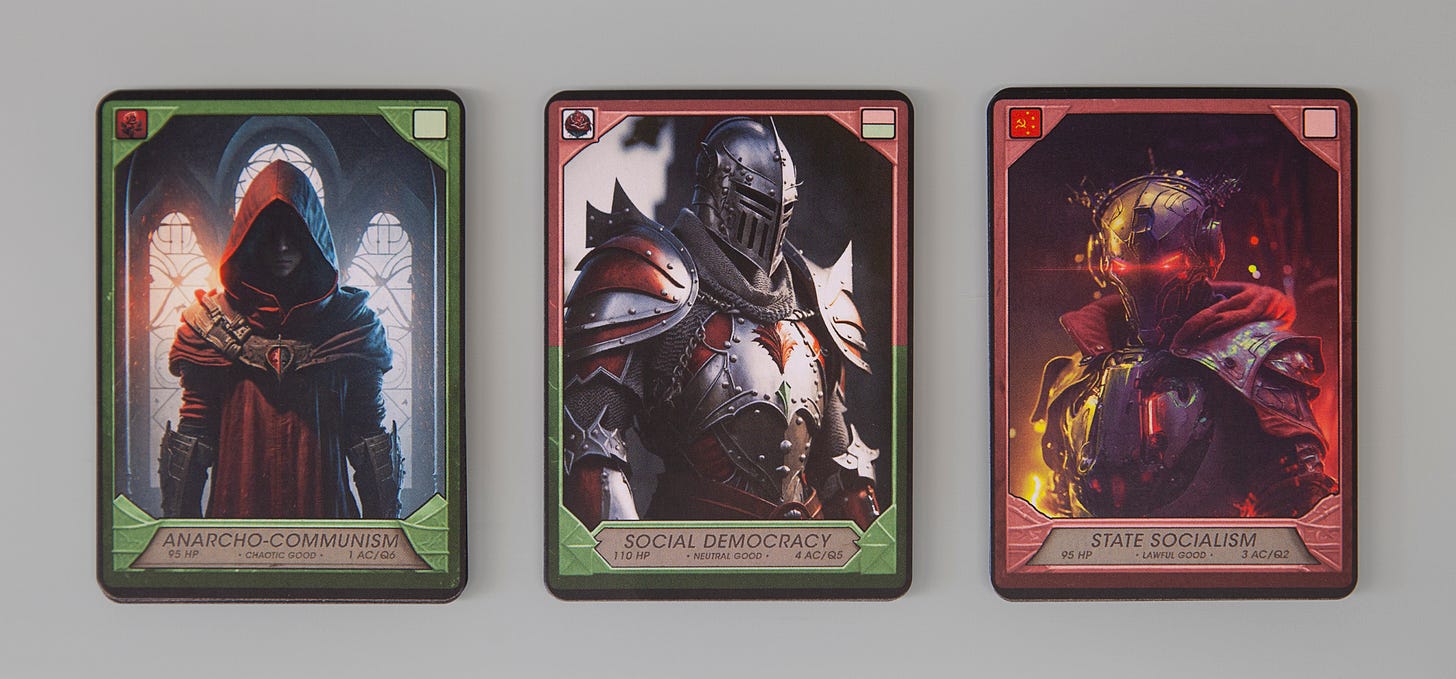
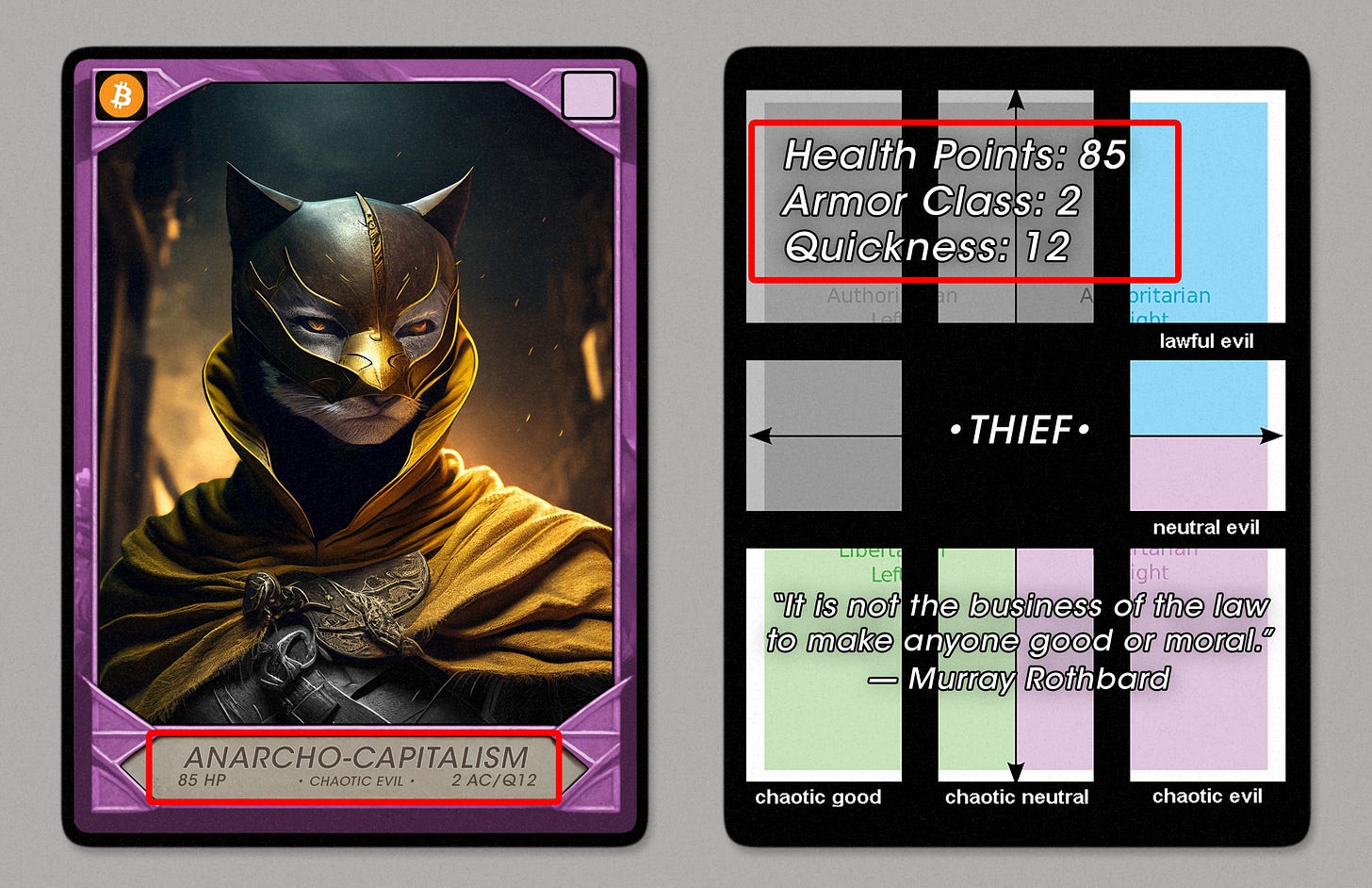
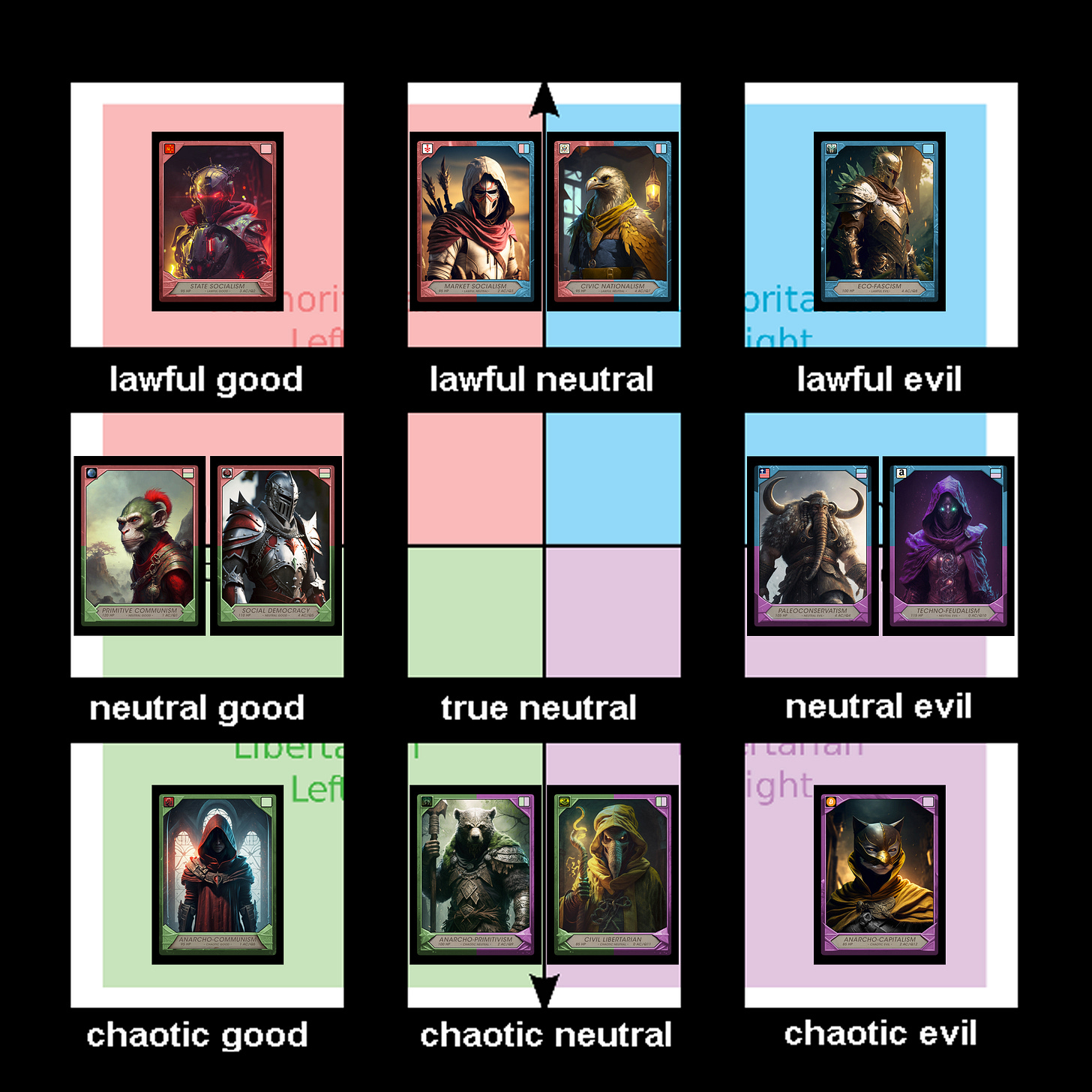
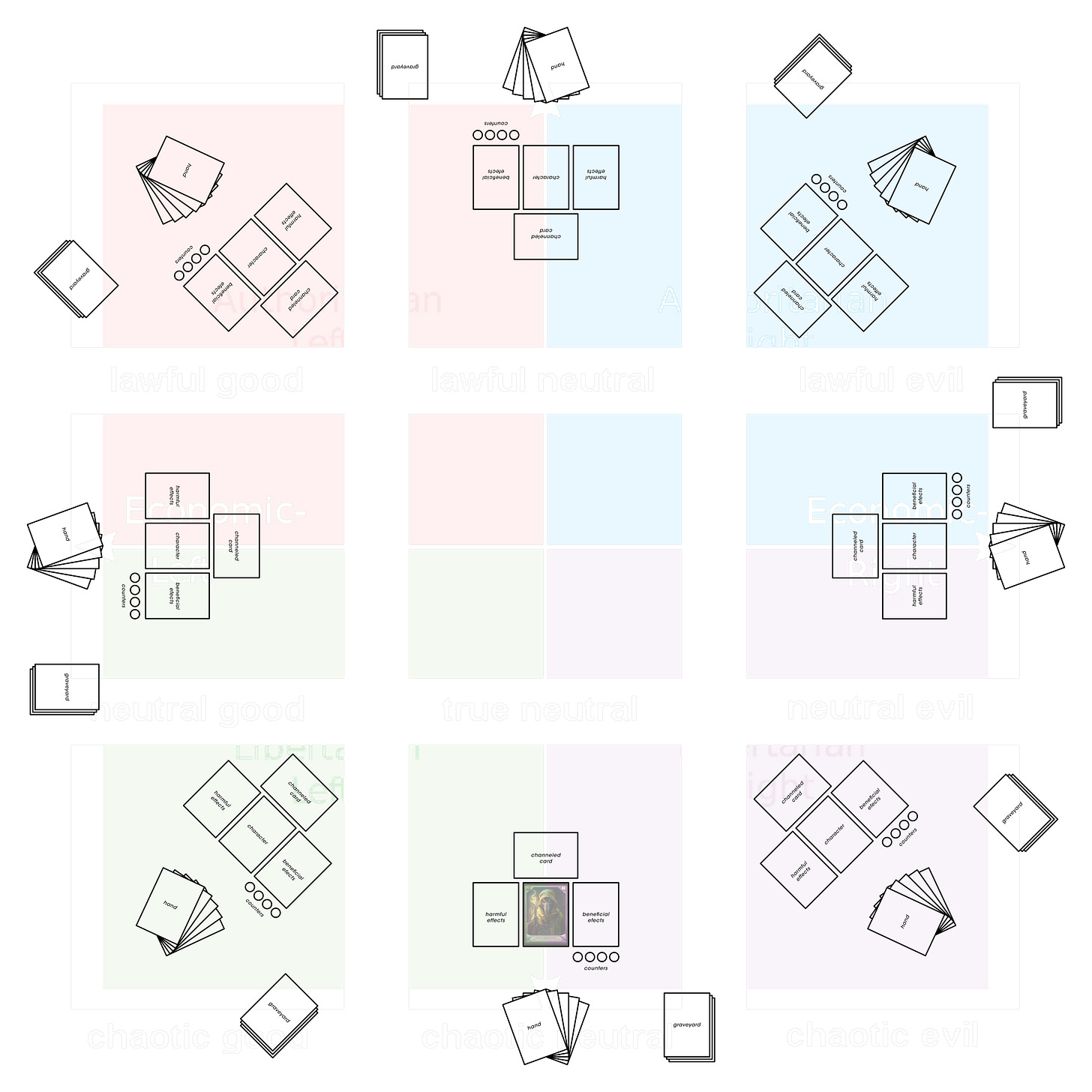
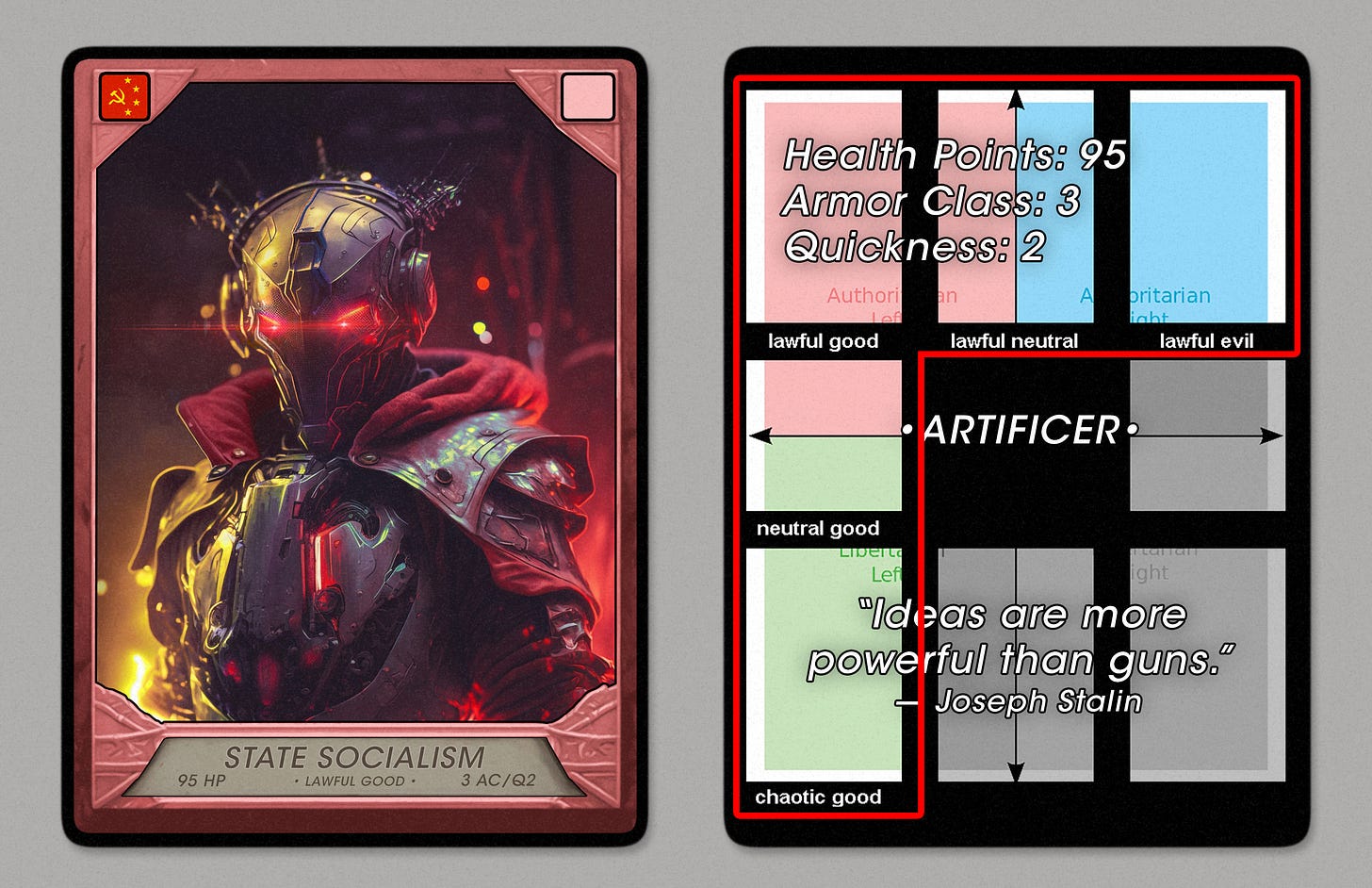
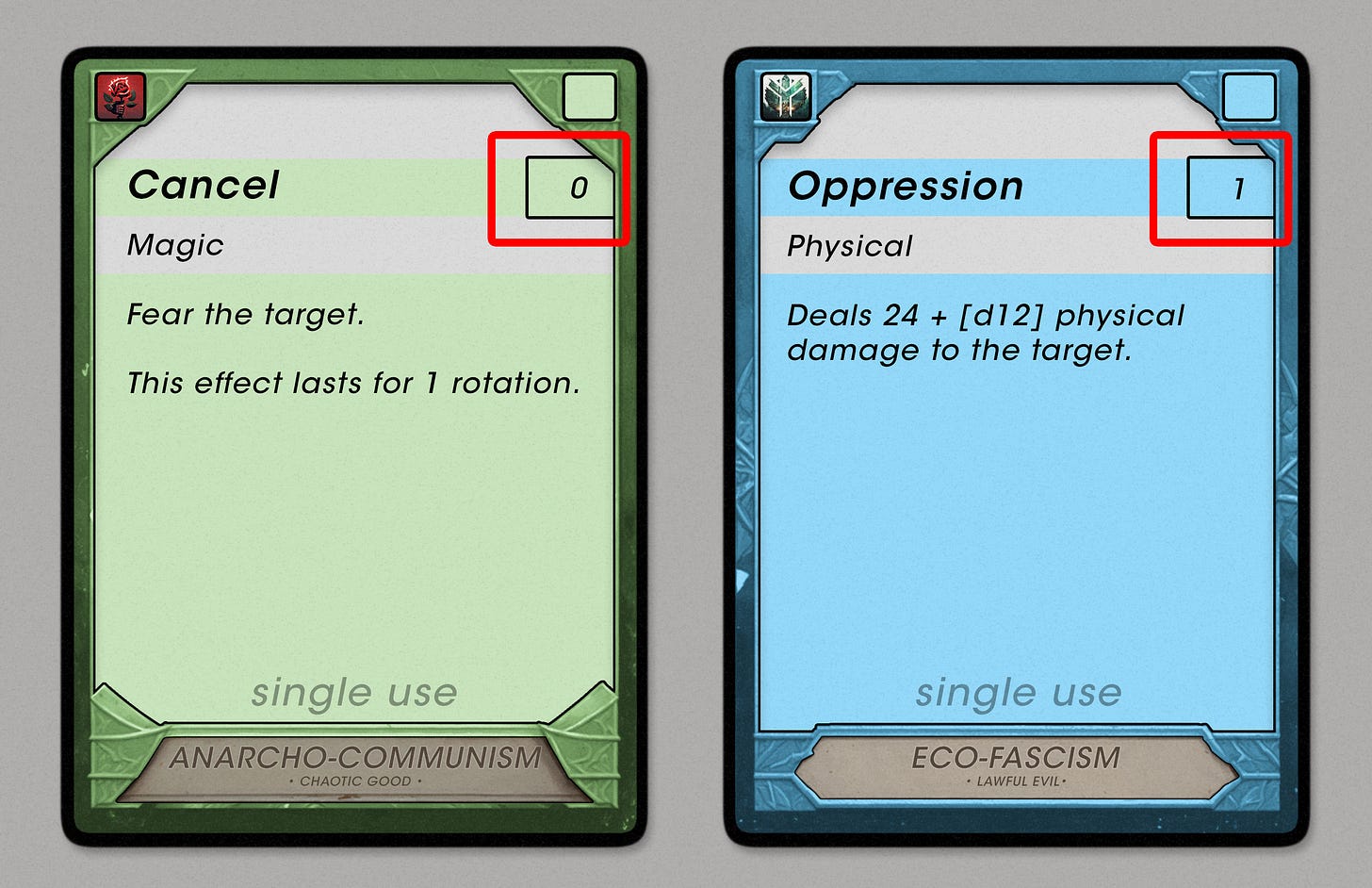
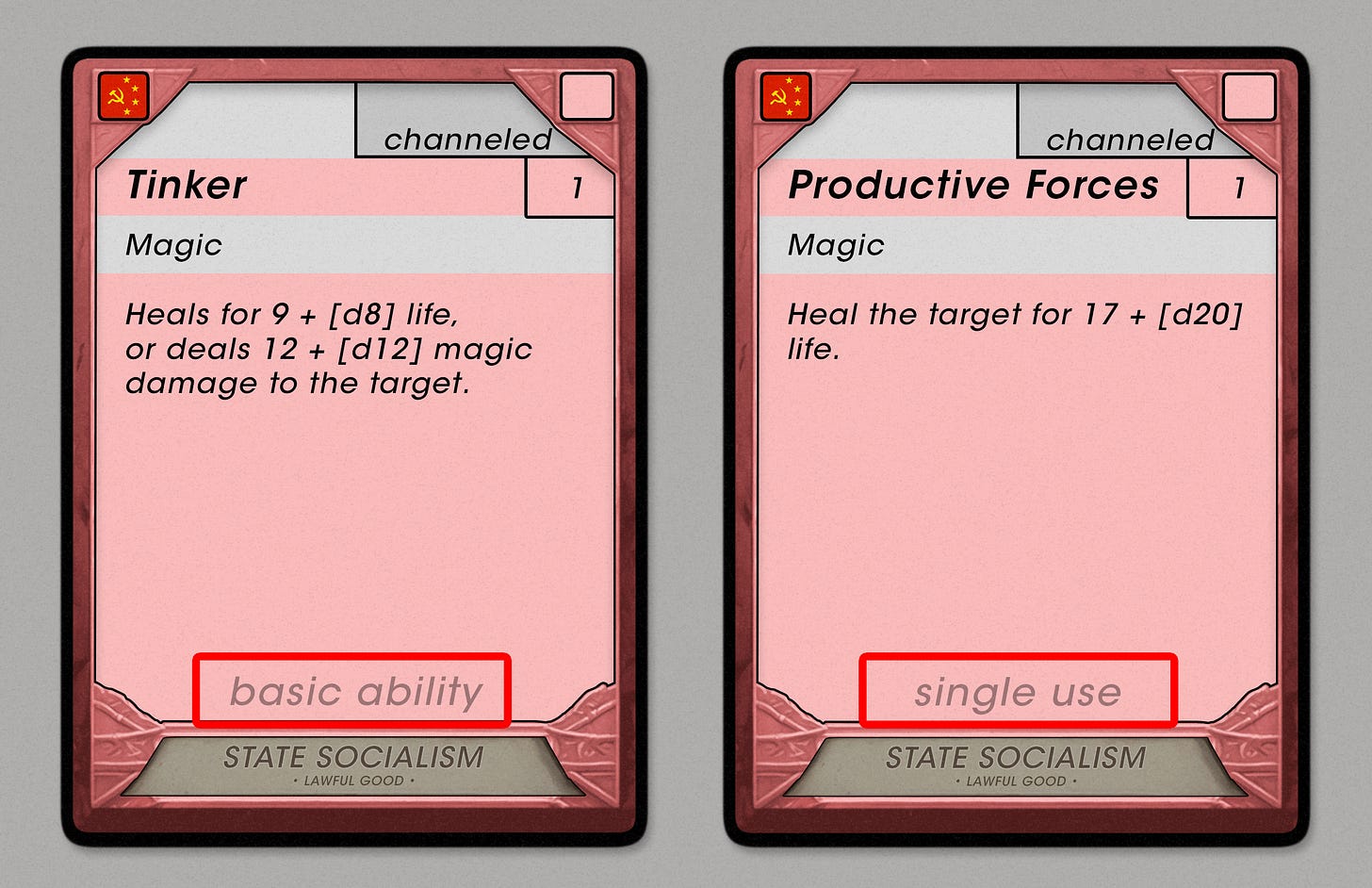
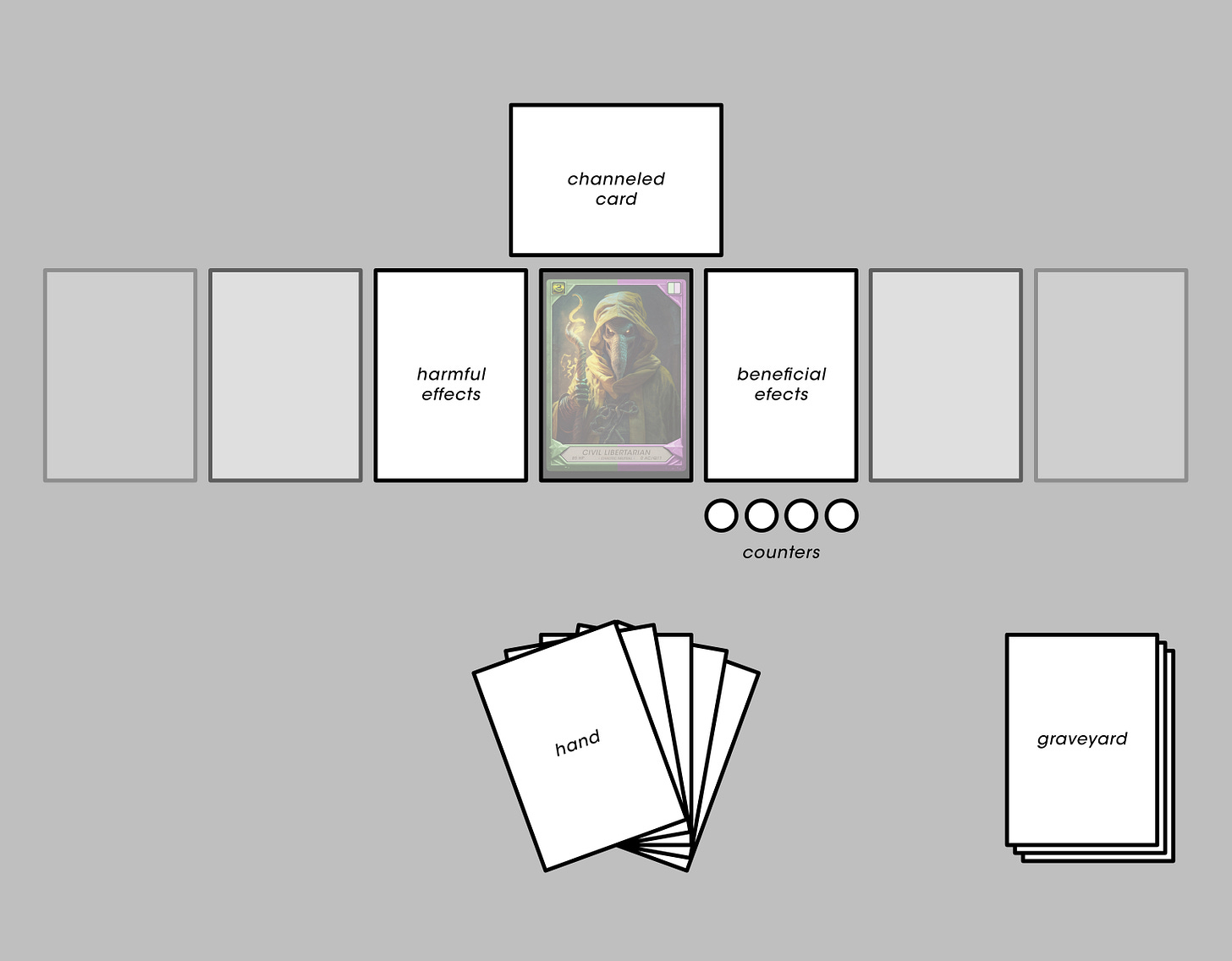
This games rules 🎲🪄🗡️